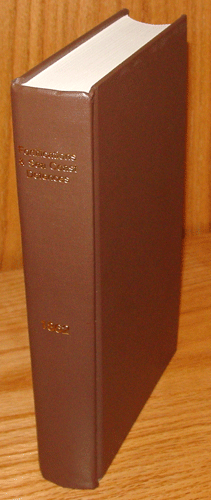CDSG Press Book Reprints
Permanent Fortifications and Sea-Coast Defenses
Congressional Report No. 62, U.S. House of Rep. (1862)
Report of the Committee on Military Affairs

The U.S. Army’s Engineer Department constructed “Third System” coastal fortifications from the post War of 1812 period to the post Civil War period. Some of the most brilliant Army Engineers, such as Sylvanus Thayer, Simon Bernard, Dennis Hart Mahan, Joseph G. Totten, and James St. Clair Morton, designed these fortifications. Many famous Army officers, like Robert E. Lee, William S. Rosecrans, P.G.T. Beauregard, James B. McPherson, George B. McClellan, and Montgomery C. Meigs, oversaw the construction of “Third System” works. Quite a few of these fortifications saw action during the American Civil War. Today, most Americans imagine “Third System” fortifications when they hear the word “fort.”
The “Third System” represents the first truly Federal coastal fortification system in the United States. First, the Board of Fortifications decided on the locations that required protection, which evolved over the years. Next, the Army Engineers designed and constructed the necessary fortifications to provide the best protection. Thus, at one location only one fort was necessary while elsewhere, several forts and other fortifications such as martello towers, redoubts, and batteries were required. During the “Third System” period, numerous reports and other documents explained the design, construction, and placement of these important fortifications and their evolution.
In 1862, the 37th Congress of the United States faced the most important national crisis since the founding of the country. A civil war between the southern and northern states had raging for months. The Committee on Military Affairs (now known as the Armed Services Committee) monitored the conduct and financing of the Union war effort. H.R. 416 shows that while involved in a civil war, the nation was more vulnerable to external threats. Thus Congress decided to strengthen the seacoast defenses. The report accompanying H.R. 416 was the Permanent Fortifications and Sea-Coast Defenses, House of Representatives Report No. 86, which reprinted a number of the important reports dealing with fortifications from various time periods including the best known one, Chief Engineer Joseph G. Totten’s 1851 report. These reports informed Congressmen and Senators of accomplished work, the fortifications’ value and future requirements; they were basically narrative reports, with accompany charts and listings on subjects such as the fortifications erected at each site. “Permanent Fortifications” is the best one-volume source for information and explanation of “Third System” coastal fortifications and merits inclusion in any U.S. coast defense library.

